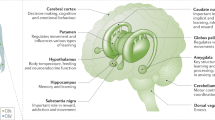Abstract
Cannabis withdrawal occurs after cessation of prolonged and heavy cannabis use.Prior to DSM-V, cannabis withdrawal had not been recognized as a separate syndrome. Intense daily use of cannabis increases the risk of cannabis dependence and the risk of cannabis withdrawal after cessation.Earlier initiation of cannabis use, increased use of more potent forms of cannabis (e.g. the flowering heads of the female cannabis plant) and frequent use of water-pipes may lead to increased serum levels of tetrahydrocannabinol and a higher risk of dependence. Cannabis withdrawal causes functional impairment which is dependent on symptom severity, and is predictive of relapse to cannabis. Onset of symptoms is usually within 24–48 h of abstinence, typically reaching a peak within the first week.Symptoms may persist for up to 3–4 weeks. Withdrawal symptoms may cause discomfort, distress and functional impairment and are a significant barrier to achieving abstinence.
Access provided by CONRICYT-eBooks. Download chapter PDF
Similar content being viewed by others
Keywords
These keywords were added by machine and not by the authors. This process is experimental and the keywords may be updated as the learning algorithm improves.
Introduction
Cannabis withdrawal occurs after cessation of prolonged and heavy cannabis use. Prior to DSM-V, cannabis withdrawal had not been recognized as a separate syndrome. Intense daily use of cannabis increases the risk of cannabis dependence and the risk of cannabis withdrawal after cessation.Earlier initiation of cannabis use, increased use of more potent forms of cannabis (e.g. the flowering heads of the female cannabis plant) and frequent use of water-pipes may lead to increased serum levels of tetrahydrocannabinol and a higher risk of dependence. Cannabis withdrawal causes functional impairment which is dependent on symptom severity, and is predictive of relapse to cannabis. Onset of symptoms is usually within 24–48 h of abstinence, typically reaching a peak within the first week.Symptoms may persist for up to 3–4 weeks. Withdrawal symptoms may cause discomfort, distress and functional impairment and are a significant barrier to achieving abstinence.
Symptoms
-
Anxiety
-
Sleep difficulty (e.g. insomnia, nightmares)
-
Decreased appetite or weight loss
-
Depression
-
Abdominal pain
-
Sweating
-
Fever
-
Chills
-
Headache
Signs
-
Irritability, anger or aggression
-
Depressed affect
-
Nervousness or anxiety
-
Restlessness
-
Shakiness/tremor
-
Constricted or blunted affect
-
Diaphoresis
Life-Threatening Symptoms /Signs
The cannabis withdrawal syndrome is not life threatening and it is not associated with significant medical or psychiatric consequences.
Differential
-
Anxiety syndrome, panic attack
-
Depression
-
Other substance intoxication or withdrawal
-
Primary insomnia
-
Side effect to medication
-
Metabolic derangement
Treatment
Treatment is supportive that may address intolerable symptoms such as insomnia.
-
There are no accepted pharmacotherapies for the treatment of cannabis withdrawal or cessation.
-
The most promising are the newer tetrahydrocannabinol agonists, such as nabiximols and nabilone.
-
Non-cannabinoid medications used to treat other substance-use disorders (clonidine, naltrexone, nefazodone, mirtazapine, bupropion, venlafaxine, divalproex, lithium, oxytocin, quetiapine, baclofen) have been largely negative for cannabis withdrawal.
-
The evidence base for the anticonvulsant gabapentin and the glutamatergic modulator N-acetylcysteine is weak, and need further investigation.
Long-Term Treatment
-
Most consistent evidence supports combination of Motivation Enhanced Therapy and Cognitive Behavioral Therapy with abstinence-based incentives (Cochrane Database).
-
Harm reduction model may include switching to cannabidiol (CBD), a cannabinoid analogue.
Tool
Additive/impurity | Comment |
|---|---|
Cocaine, PCP | Adulterant to increase potency |
Daminocide | Plant growth regulator banned by California as a carcinogen |
Isopentane | Residual solvent used in the extraction for cannabis concentrates |
Paclobutrazol | Pesticide not registered with EPA for use on food crops |
Paraquat | Herbicide, causes Parkinson’s disease |
References
Copeland J, Pokorski I. Progress toward pharmacotherapies for cannabis-use disorder: an evidence-based review. Subst Abuse Rehabil. 2016;7:41–53.
American Psychiatric Association. Diagnostic and statistical manual of mental disorders: DSM-5. Washington, DC: American Psychiatric Association; 2013.
Gates PJ, Sabioni P, Copeland J, Le Foll B, Gowing L. Psychosocial interventions for cannabis use disorder. Cochrane Database Syst Rev. 2016;5:CD005336. doi:10.1002/14651858.CD005336.pub4.
Marshall KS, Gowing L, Ali R. Pharmacotherapies for cannabis withdrawal. Cochrane Database Syst Rev. 2014;12:CD008940. doi:10.1002/14651858.CD008940.pub2.
Milin R, Manion I, Dare G, Walker S. Prospective assessment of cannabis withdrawal in adolescents with cannabis dependence: a pilot study. J Am Acad Child Adolesc Psychiatry. 2008;47(2):174–9.
Crippa JA, Hallak JE, Machado-de-Sousa JP, Queiroz RH, Bergamaschi M, Chagas MH, Zuardi AW. Cannabidiol for the treatment of cannabiswithdrawal syndrome: a case report. J Clin Pharm Ther. 2013;38(2):162–4. doi:10.1111/jcpt.12018.
Raber JC, Elzinga S, Kaplan C. Understanding dabs: contamination concerns ofcannabisconcentrates and cannabinoid transfer during the act of dabbing. J Toxicol Sci. 2015;40(6):797–803. doi:10.2131/jts.40.797.
Stone D. Cannabis,pesticidesand conflicting laws: the dilemma for legalized states and implications for public health. Regul Toxicol Pharmacol. 2014;69(3):284–8. doi:10.1016/j.yrtph.2014.05.015. Epub 2014 May 20.
Lanaro R, Costa JL, Cazenave SO, Zanolli-Filho LA, Tavares MF, Chasin AA. Determination of herbicides paraquat, glyphosate, and aminomethylphosphonic acid in marijuana samples by capillary electrophoresis. J Forensic Sci. 2015;60(Suppl 1):S241–7. doi:10.1111/1556-4029.12628. Epub 2014 Nov 20.
Author information
Authors and Affiliations
Corresponding author
Editor information
Editors and Affiliations
Rights and permissions
Copyright information
© 2018 Springer International Publishing AG
About this chapter
Cite this chapter
Pasic, J. (2018). Cannabis Withdrawal. In: Nordstrom, K., Wilson, M. (eds) Quick Guide to Psychiatric Emergencies. Springer, Cham. https://doi.org/10.1007/978-3-319-58260-3_42
Download citation
DOI: https://doi.org/10.1007/978-3-319-58260-3_42
Published:
Publisher Name: Springer, Cham
Print ISBN: 978-3-319-58258-0
Online ISBN: 978-3-319-58260-3
eBook Packages: MedicineMedicine (R0)




